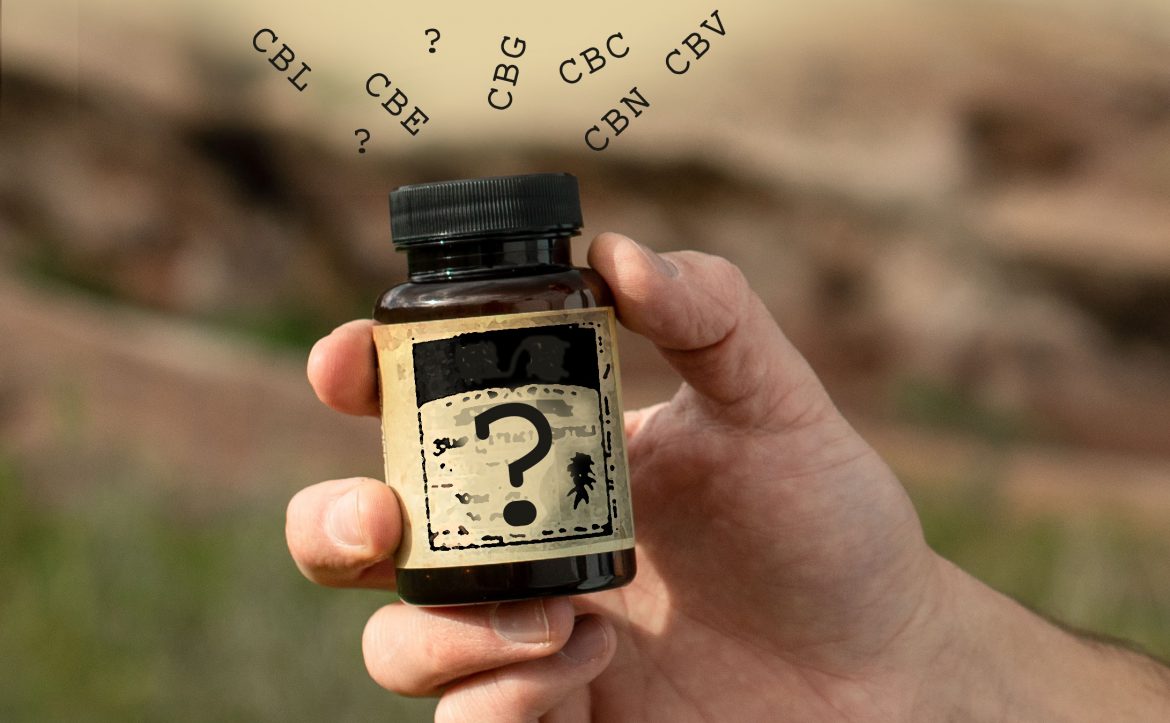You’ve heard of CBD (cannabidiol), as that’s all the rage right now. Buyers and sellers everywhere are excited about the benefits this substance provides, and the fact that loosening regulations makes it easier to buy and sell.
But what about all those other “CB” compounds? Specifically, we’re talking about the 120 identified cannabinoid compounds found in cannabis. Do they have the same effects as CBD?
In most cases, the best we can say is, “We’re not sure.” That’s because cannabidiol has received the most attention from researchers. That’s likely to change as scientists become interested in how the other compounds affect the body and mind.
CBC
CBC refers to cannabichromene is a non-psychoactive substance that’s more common in the tropical varieties of cannabis. There is still a lot of research to be done on CBC. However, early research is suggesting that it may have anti-tumor effects in mice.
CBL
Cannabicyclol is a non-psychoactive substance. It’s considered a degradative product, as cannabichromene degrades into CBL under the right conditions. Very little research has been done on CBL, though some researchers are evaluating the substance to see if it has anti-inflammatory or anti-tumor effects on the body.
CBV
Cannabivarin is another non-psychoactive substance that’s found in fairly minor amounts of fresh cannabis. It is an oxidation product of tetrahydrocannabivarin, so you’re more likely to find the substance in aged cannabis. CBV is still under study to see if it has any pharmacological effects.
CBDV
This refers to cannabidivarin, which is a non-psychoactive substance that has anti-convulsive effects. It’s currently being studied and developed by a pharmaceutical company to help people with epilepsy.
CBE
This abbreviation refers to cannabielsoin, and it’s considered a metabolite formed from cannabidiol (CBD). Although it was first discovered in 1983, this is one of the substances where very little is known about it.
CBN
You’re unlikely to find much cannabinol in fresh plants, since CBN is the result of THC degrading when exposed to light and air. This substance – which is typically found in aged cannabis – is mildly psychoactive. While CBN is not on the list of schedules from the United Nations’ Single Convention on Narcotic Drugs nor the Convention on Psychotropic Substances, it is controlled in some countries.
It’s currently being studied for its therapeutic uses, including mild sedation and sleep-inducing effects, anti-vomiting, anti-convulsive effects, anti-inflammatory and more. Preliminary research is showing positive effects for these uses and others.
CBCV
Although cannabichromevarin was first isolated by researchers in 1975, scientists have done very little study on this substance since that time. As such, we don’t know how CBCV affects the body. Some researchers suggest that the effects may be similar to those of CBC, since the two substances have similar chemical profiles.
CBG
While cannabigerol is considered non-psychoactive, and it is a minor constituent of cannabis, it nonetheless contributes to the effects of cannabis. Currently, CBG is being studied to see if it has any effect on colitis. More research is needed to determine if there are any positive pharmacological effects for this disease or others.
CBT
Cannabicitran is a substance that’s most commonly found in the Lebanese version of hashish. Aside from that, very little is known about CBT and what, if any, effects it has on the body.
CBDA
Cannabidiolic acid is the acidic precursor to CBD. Preliminary research is evaluating this substance to see if it has any antibacterial, anti-nausea and/or anti-tumor effects.
CBGM
Cannabigerol monomethyl ether has similar chemical properties to CBG, which allows researchers to hypothesize that it will act similarly in the body. However, we can’t say this conclusively until more research as been conducted on this substance.

Conclusion
As you can see, scientists and other researchers still have a lot of work to do. While they’ve isolated the compounds mentioned above, and in some cases have started to evaluate them for their therapeutic effects, plenty of research is still needed on these cannabinoid compounds.
We can expect in the not-too-distant future to start hearing more about some of the compounds on this list, especially those that are already showing promise (such as CBDV). If you’re already selling CBD products, then you’ll want to keep an eye on this research.
You’ll also want to keep an eye on the regulations that the government rolls out as these compounds become more popular. It’s a good idea to partner with a merchant account processor who stays on top of these regulations so that you don’t get caught flat-footed. That’s why we invite you to partner with us here at CBD Processing.






